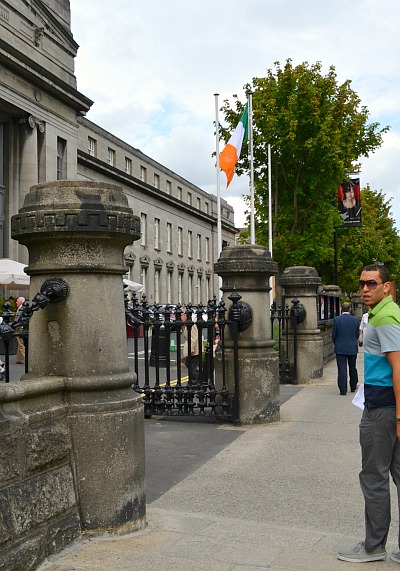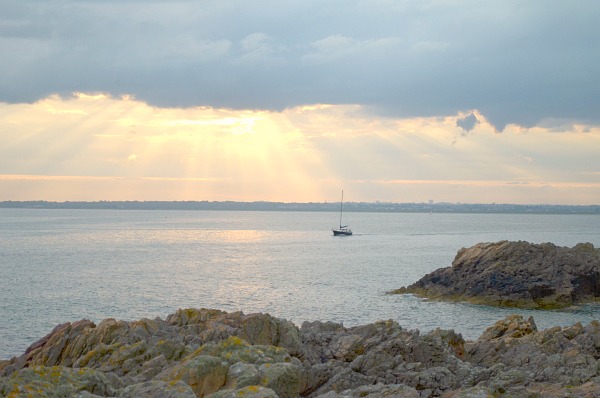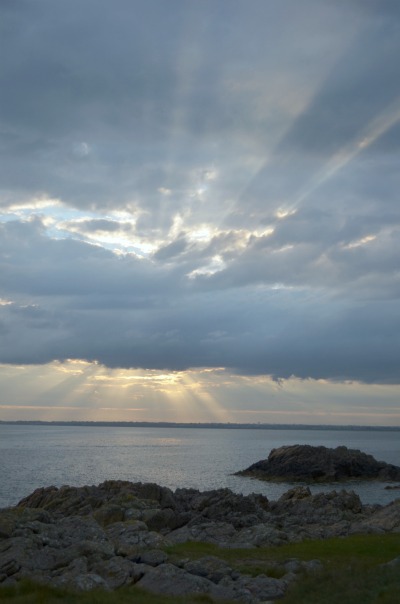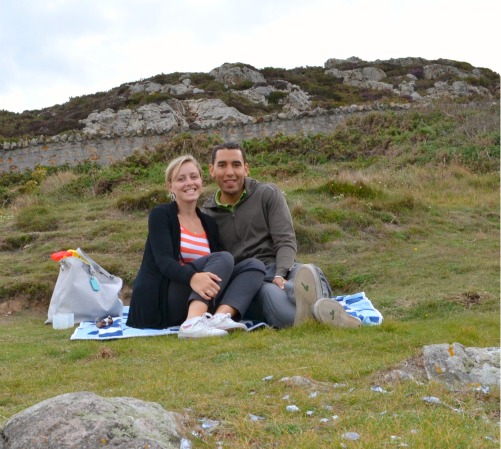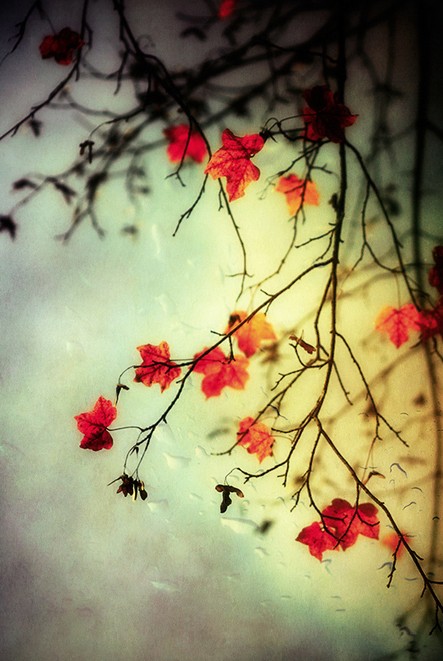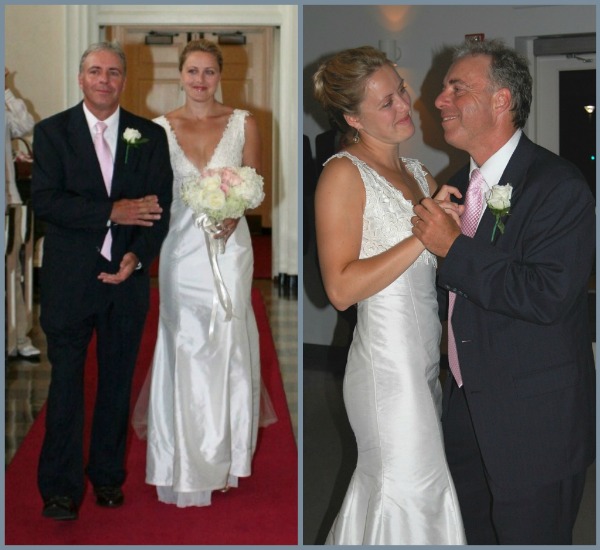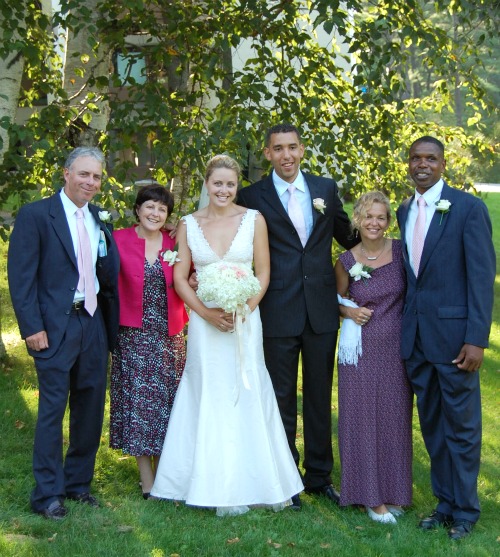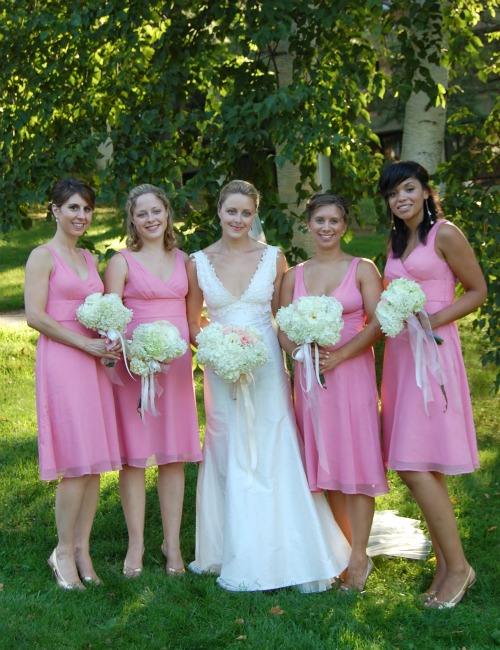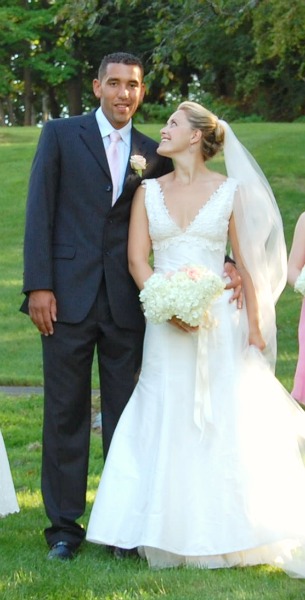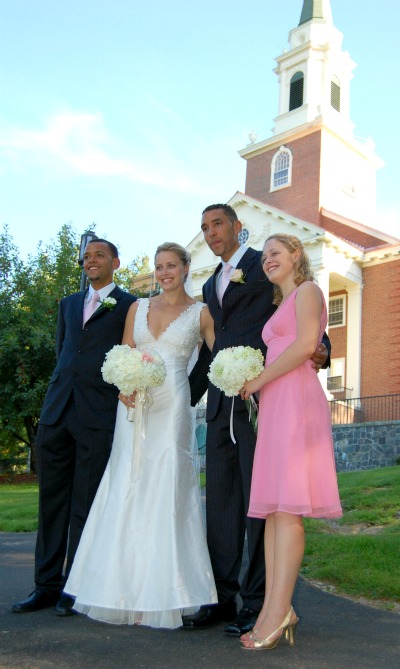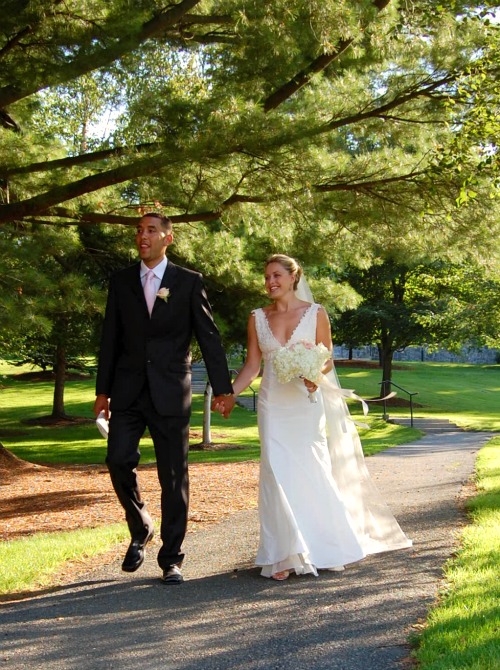Good morning, readers! We’re off to celebrate our anniversary, but before we run out the door, here is Kara‘s last photo tip in the series. Fantastic tips for making sure you’re prepared to take great photos on vacation! Thanks, Kara!
Hello From China Village Readers! I hope you’ve enjoyed the photo tips over the past few weeks.
This week I’ll be wrapping up my photo tips with the topic of Vacation Photography. I’m sharing tips on what camera gear to bring on vacation, what images are “must-capture” images, and how best to capture those images.

I’m just back from a wonderful vacation in Kauai – so there’s no better time to share what equipment I tend to bring, share lessons I’ve learned in the past, and share some images. I’ve pulled not only a few images from my recent vacation, but some very old images from my first trip to Ireland where I used my camera for the first time!
What to Pack for Vacation
Your camera // I usually take one camera and my iPhone
Wide Angle Lens // great for landscapes, tall buildings, etc. – I prefer my 24mm fixed length lens
Fixed Length Lens on the smaller side // I love my 50mm lens because it’s light-weight, small, and I can take it everywhere
Extra battery and a battery charger // don’t get caught with a drained battery on your trip
Microfiber cloth for cleaning your lens // check this often for dirt and small fibers
Blower for cleaning // easy way to blow off the dirt from your camera, lens, and sensor
Memory cards // I prefer 8 GB cards and usually bring at least two extra
Laptop w/connector to camera // if you want to transfer your images
Plastic waterproof bag for camera // just in case you’ll be around water
Vacation Photography Tips
1 // Getting the Shot
Before you go on vacation, spend some time researching the best spots to photograph – whether it’s landscapes, architecture, or even food! Google Images can be a quick resource for searching images at your travel destination. When you get to your destination, be sure to take your camera with you everywhere. If it’s just not feasible to bring a big DSLR, grab your iPhone or little point-and-shoot camera.
2 // Set the Alarm
Yep – set the alarm, even though you’re on vacation. Set that alarm at least one morning to capture a beautiful sunrise. Check online to find the exact sunrise time at your vacation spot and get there with time to set up your camera. Here’s an image from our last morning in Kauai. Such a great way to start the day!
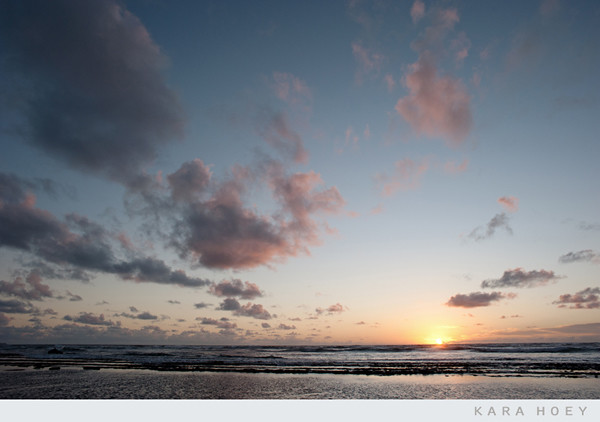
3 // Proper Exposure
When it’s really bright outside it can be hard to rely on the back of your camera (LCD display) to determine if you’ve taken a properly exposed image (simply put, your image is not too dark or too bright). In these situations, you can either run back under the shade to cover your camera from the sun or learn how to use your camera’s histogram (check your camera manual to see if your camera has one). You can also use your camera’s highlight alert option or “blinkies” to show you what areas of your image are overexposed.
4 // Polarizer
If you plan on taking images of sky, land, or water on a bright day, be sure to grab a good quality polarizer filter for your lens. This filter simply screws on to the end of your lens and helps increase color saturation, reduce reflections, and darken a blue sky. Take a look at the images below and notice that with the polarizer, the sky is bluer, the clouds have more contrast, the plants are greener, and there’s less haze in the sky. The image on the left was taken with a macro lens without a polarizer – and I can promise that the colors look nothing like the real colors of a Kauai landscape.
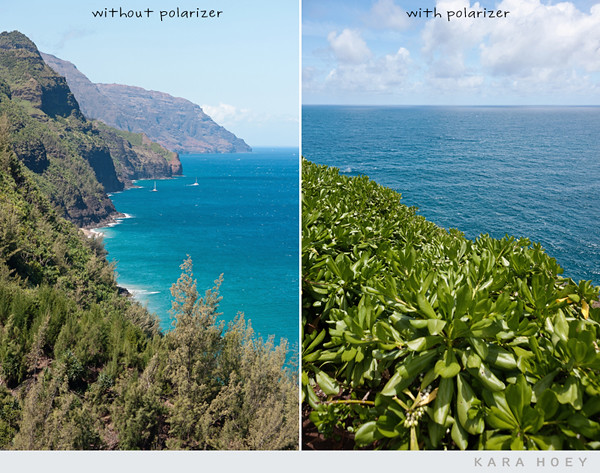
5 // Annoyances
Does your camera beep or shine light on auto-focus? If you’re trying to be discrete with your camera, or if you’re at a quiet restaurant, or even photographing animals, these beeps and lights can be a problem. Take the time to check your camera’s menu options to disable these options. You’ll quickly forget that you ever had them.
6 // Variety
I like to bring at least two types of lenses on vacation – one that will allow me to shoot wide and another that will help me get closer to the subject. Here are two images from the Kauai Coffee Orchard – with a detailed shot of the coffee cherry and the long rows of coffee trees.
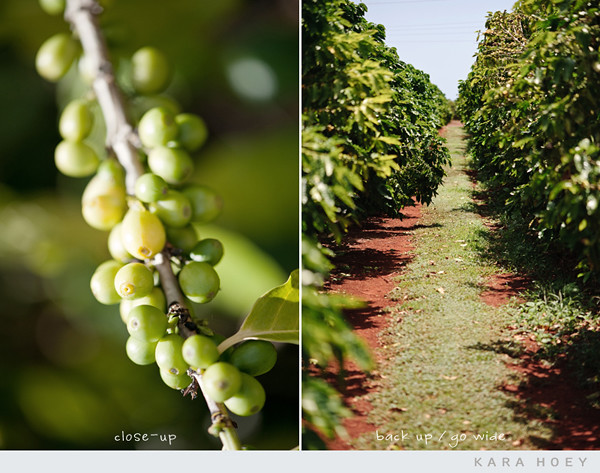
7 // Horizon Lines
I’ll never forget the first photography trip I took in Ireland. We were up really early and I was so excited at my amazing capture of the Giants Causeway. So proud of my capture, I showed the image to my instructor and he said, “looks like the tide is coming in”. Looking closer at my image, I realized that the ocean was my horizon line and it was completely tilted up to the right. Ugh. I now try to take a few extra seconds to get my horizon level using my camera’s helpful ruler guides in the viewfinder. Here’s an image below from Moloaa Bay, Kauai…important to get a nice horizon line to balance the sky, water, waves, and beach.
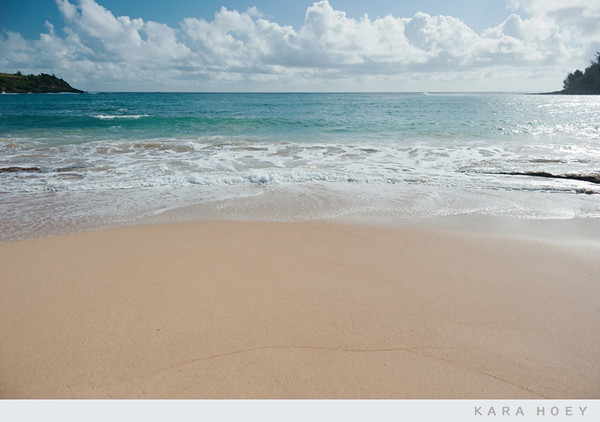
8 // Self-Portraits
Do put yourself in front of the camera! Whether it’s a family vacation or a romantic getaway, get everyone in at least one shot to capture a memory of your trip. If you don’t trust strangers with your camera, you can bring a tripod or prop up your camera and use the self-timer, ask a waiter, or just reach out an arm (long arms are good for this).
9 // Backgrounds
When taking pictures of people or subjects, make sure to check the background of your images for any distractions. Distractions can include tree limbs or light poles appearing to grow out of heads, bright colors, etc. Here are two images below for example from my Ireland trip, I was so engrossed in capturing this beautiful Connemara Pony, that I never noticed another brighter colored horse in the background – both his front-side and back-side made an appearance in my shots. If I had waited a moment or moved slightly to the left I could have placed the horse’s head in a cleaner spot without distractions.
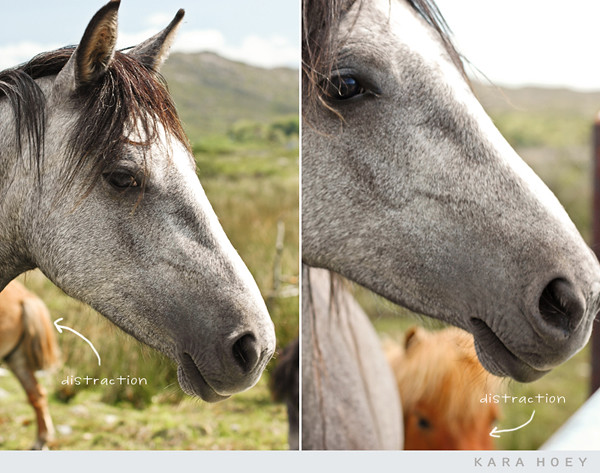
10 // Sensor Dust
If you’re able to change out your lenses, you’ve probably learned about sensor dust. The image below was taken on my first trip to Ireland, using my camera for the first time. It’s hard to see in the small image below, but by day 10 of my trip my camera’s sensor was collecting a LOT of dust. I’ve circled the dust spots below. Be sure not to change your lenses when it’s windy, dusty, etc. to avoid getting dust on your sensor and causing awful spots on your images. Clean your sensor often using a blower (or let your camera do a self-clean if it has this option). You can also get rid of these spots in Photoshop using Clone Stamp, Healing Brush, Spot Healing Brush, etc.
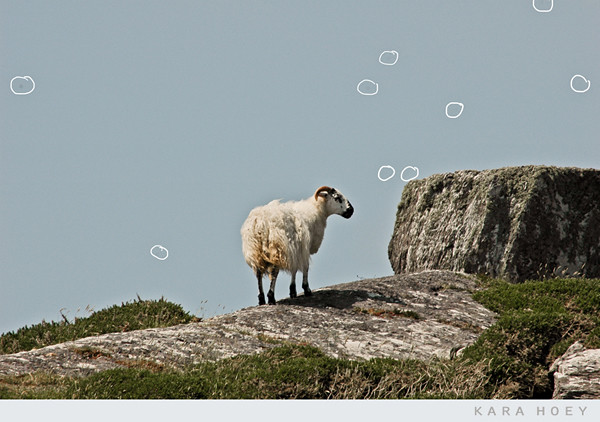
There are so many other vacation photography tips, but I’ve shared just a few things that went through my mind during my recent trip. Remember to just enjoy your vacation – it’s okay if you miss a good shot, so take advantage of the moment and take it all in. Also, do put those vacation images to good use – post them on your blog, print them out for an album or frame, or create your own photo book.
I really hope you’ve enjoyed the photo tips. Keep learning, shooting, and just enjoying photography!
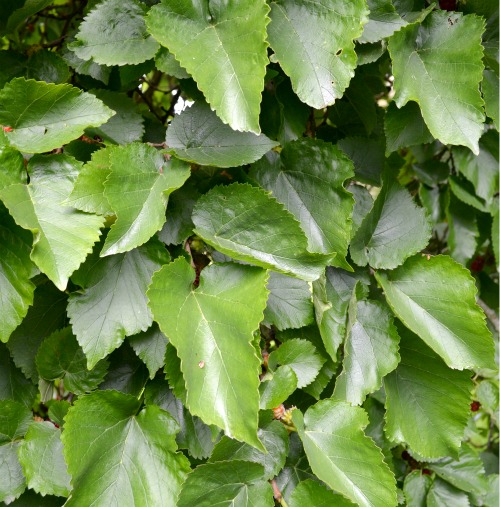 But this tree is very sneaky. Check out what’s on the underside of all those leaves!
But this tree is very sneaky. Check out what’s on the underside of all those leaves!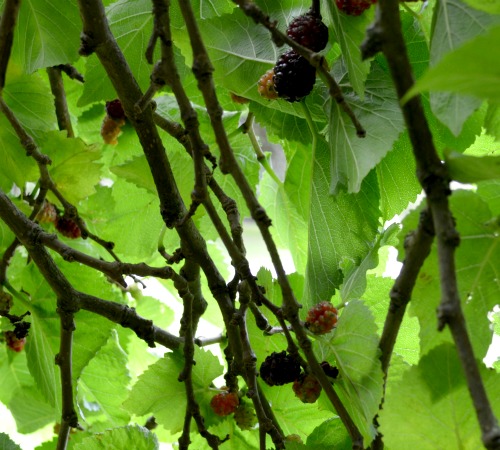 Big, fat mulberries! Now, to be honest, I’ve never seen a mulberry in my life until yesterday. And I don’t have a clue what to do with them.
Big, fat mulberries! Now, to be honest, I’ve never seen a mulberry in my life until yesterday. And I don’t have a clue what to do with them.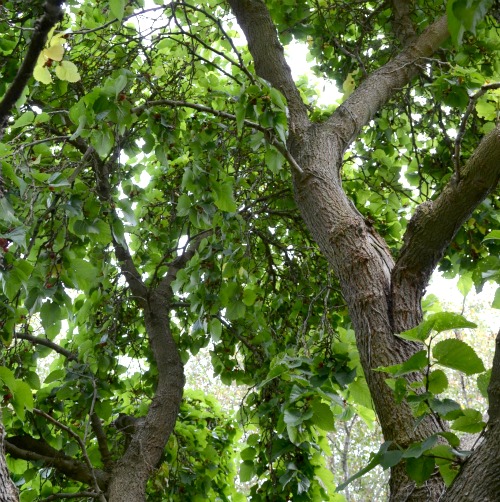 {The inside of the tree is quite hollow with lots of sloping branches to climb. Although I’m pretty sure our staff there wouldn’t be too thrilled to see me out there climbing the mulberry tree!}
{The inside of the tree is quite hollow with lots of sloping branches to climb. Although I’m pretty sure our staff there wouldn’t be too thrilled to see me out there climbing the mulberry tree!}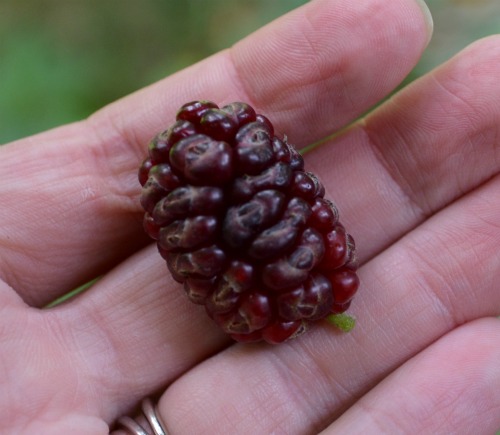 {They’re huge, right?!}
{They’re huge, right?!} {When you shake the branches, the ripe ones fall to the ground. Which means wearing white tennis shoes was not the best idea at all. Live and learn with these mulberries, I suppose!}
{When you shake the branches, the ripe ones fall to the ground. Which means wearing white tennis shoes was not the best idea at all. Live and learn with these mulberries, I suppose!}



